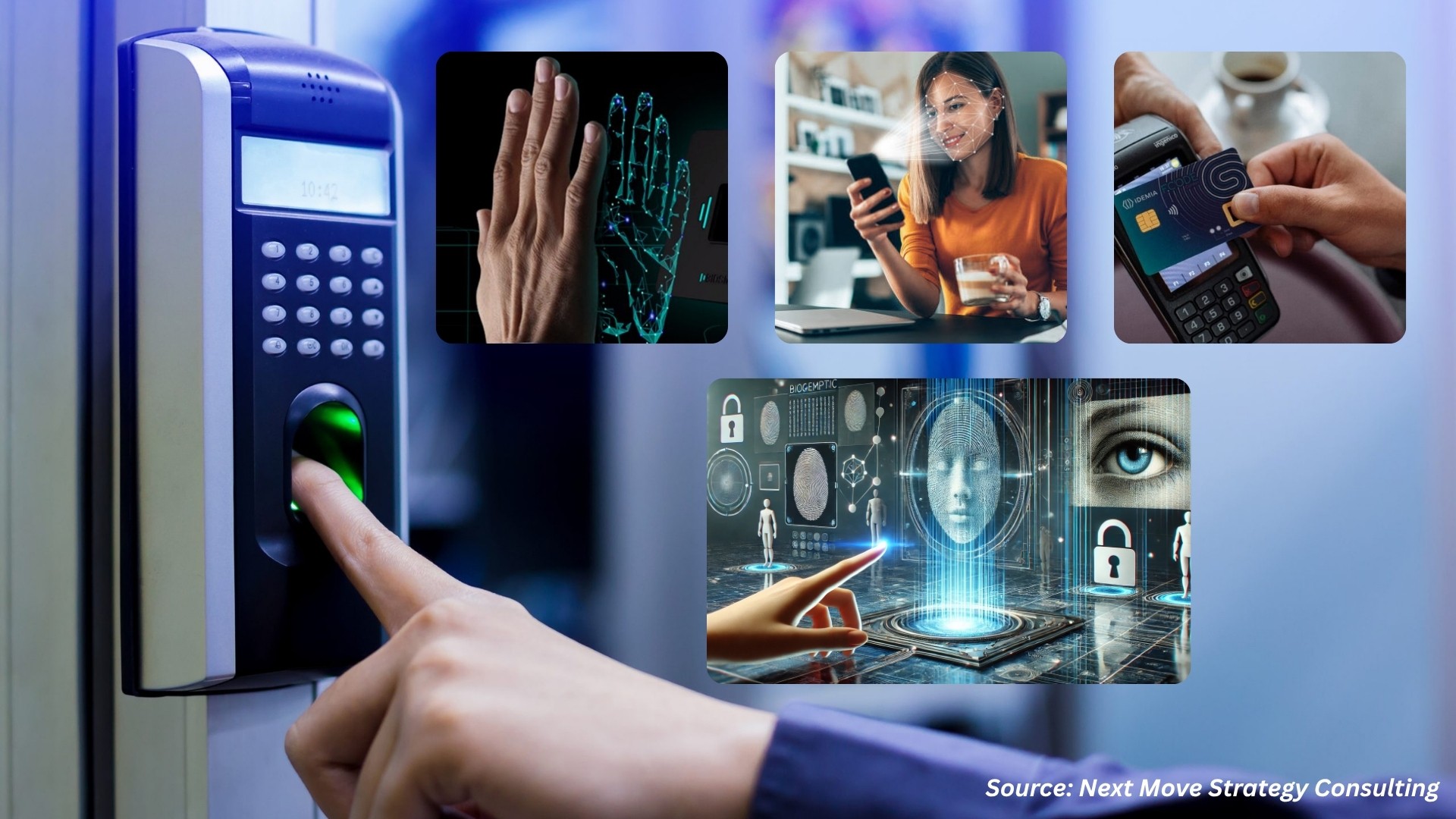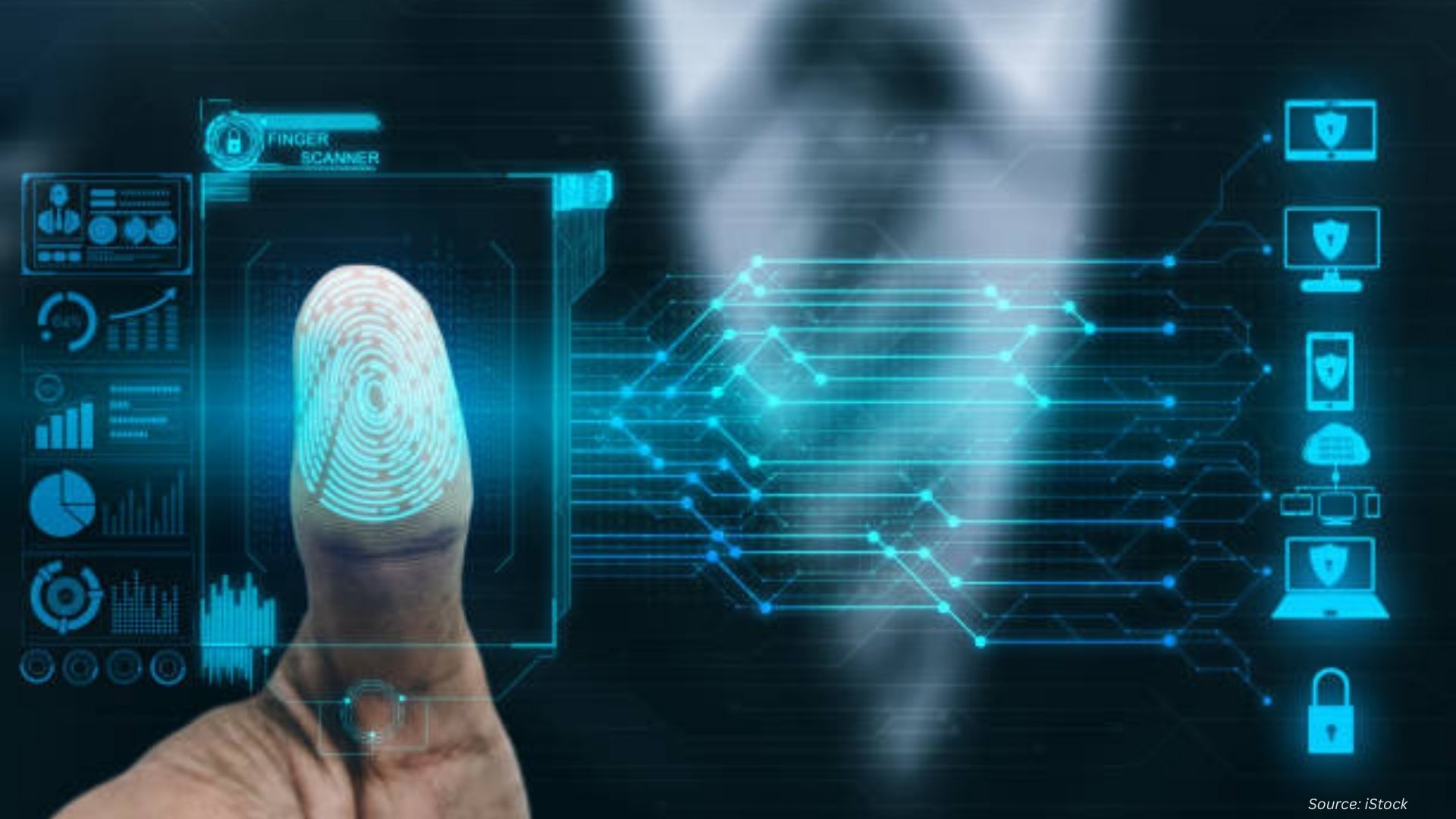Securing the Future with Advanced Biometric Systems
Published: 2025-09-10

Biometric systems are no longer just futuristic concepts. From scanning faces at airports to enabling secure payment via fingerprints, biometrics are becoming central to digital identity. In 2025, innovations like palm recognition, biometric payment cards, and AI-powered facial matching are moving the industry into a new phase of precision, accessibility, and security.
Palm Recognition
Precise Biometrics, a leader in biometric technology, has officially launched a new product featuring a palm recognition modality, expanding its current portfolio that includes fingerprint and facial recognition. Built on the same trusted platform as its widely acclaimed fingerprint algorithm, the new palm recognition capability reinforces the company’s strong market position. This launch is set to broaden Precise Biometrics’ reach to additional customers and applications, with the potential to boost sales across various industry sectors.
Key Highlights of Precise Biometrics’ Palm Recognition Launch
Milestone Expansion: The introduction of palm recognition marks a major advancement in Precise Biometrics’ growth, enhancing its biometric suite beyond fingerprint and facial recognition technologies.
Dual Offering: The palm recognition technology will be available both as a standalone software algorithm and as a fully integrated feature in the company’s flagship products—YOUNiQ Access for biometric access management and YOUNiQ Visit for visitor management.
Enhanced Security and Usability: Designed to deliver high security with improved ease of use, palm recognition ensures a fast, reliable, and touchless authentication experience.
Touchless Advantage: By enabling hygienic, non-contact interaction, the solution meets modern user expectations for convenience and safety—particularly in shared or public environments.
Intuitive User Experience: With clear intent recognition and seamless operation, the system supports quick identification while maintaining robust security protocols.
Versatile Applications: Ideal for a variety of use cases such as access control, visitor management, and payment authentication, expanding the solution’s utility across industries.
Biometric Payment Cards in Japan: A Milestone
IDEX Biometrics, in collaboration with LIFE CARD—Japan’s most innovative credit card issuer—is entering a new market with the launch of biometric payment cards in Japan. This initiative marks the official introduction of biometric smart card technology to the Japanese payments landscape, with commercial rollout planned for the first half of 2025.
Japan stands out as one of Asia’s largest and most advanced payment markets, offering a robust infrastructure well-suited for biometric smart card adoption. Credit cards have become the leading alternative to cash in the country, with over 314 million cards in circulation. Representing more than 80% of all cashless transactions, credit cards remain the dominant form of digital payment in Japan.
Key Highlights: IDEX Biometrics and LIFE CARD Launch Biometric Payment Cards in Japan
Strategic Market Entry: IDEX Biometrics partners with LIFE CARD, Japan’s most innovative credit card issuer, to introduce biometric payment cards in the Japanese market.
National Debut: This collaboration marks the first-ever introduction of biometric smart card technology into Japan’s payments ecosystem.
Commercial Rollout Timeline: The first commercial deployment of biometric payment cards is targeted for the first half of 2025.
Favorable Market Conditions: Japan boasts one of Asia’s largest and most technologically advanced payment infrastructures, making it highly conducive to biometric card adoption.
Dominant Use of Credit Cards: With over 314 million credit cards in circulation, they are the most widely used non-cash payment method in Japan.
Cashless Leadership: Credit cards account for more than 80% of Japan’s cashless transactions, significantly surpassing other digital payment methods.
AI and Machine Learning Drive Biometric Accuracy
Biometric authentication systems carry inherent privacy risks, as the exposure of biometric templates like fingerprints or iris scans can result in serious security breaches. While Fully Homomorphic Encryption (FHE) allows computations on encrypted data, its practical adoption is limited due to challenges such as large ciphertext sizes, significant key overhead, and constrained trust assumptions. To address these limitations, we introduce the Bidirectional Transciphering Framework (BTF)—a novel approach that integrates FHE, transciphering techniques, and a non-colluding trusted party. This framework enables efficient, secure, and privacy-preserving biometric authentication.
Key Features:
Architectural Innovation:
Introduces a non-colluding trusted party that supports secure evaluation and centralized key management while preserving the core FHE trust model—ensuring that client data remains private at all times.
Double Encryption Mechanism:
Implements a layered encryption approach to maintain strong data confidentiality and uphold the trust assumptions required by Fully Homomorphic Encryption (FHE).
Three Core Challenges Addressed:
Reduced FHE Ciphertext Size – Minimizes the size of returned ciphertexts for more efficient communication.
Authentication Integrity – Prevents clients from falsely claiming successful authentication.
Scalable Key Management – Enables centralized and scalable management of FHE keys across users.
Technical Implementation:
Utilizes the TFHE (Fast Fully Homomorphic Encryption over the Torus) scheme in combination with the Trivium cipher to realize the BTF architecture.
Practical Evaluation:
Tested on iris-based biometric datasets, showing a reduction in transmission size by up to 121 times compared to conventional FHE models.
Deployment Potential:
Demonstrates significant scalability, efficiency, and real-world feasibility for privacy-preserving biometric authentication systems
Comparative Applications of Facial Recognition in Retail and Finance Industries
|
Aspects |
Retail Industry |
Finance Industry |
|
Core Focus |
Improves customer experience & personalization |
Stronger security & fraud prevention |
|
Use of Facial Recognition |
Identify repeat customers; suggest personalized items |
Authenticates users to secure transactions |
|
Facial Liveness Detection |
Prevent spoofing in loyalty programs & self-checkout kiosks |
Guarantees real users are the only ones who can access accounts and services |
|
Impact on User Engagement |
Prevent the use of fraudulent accounts in loyalty programs |
Simplifies digital banking; verification time reduced |
|
Security Measures |
Increases retention & sales among customers |
Prevents identity theft, deepfake, and spoofing |
The Growth of 3D Facial Recognition Technology
The emergence of 3D facial recognition has transformed identity verification systems by offering superior accuracy and enhanced security. Unlike traditional 2D methods, 3D facial recognition captures depth, facial contours, and unique structural features, making it highly effective even under varying lighting conditions and viewing angles. By generating a vast number of facial data points, this technology significantly improves validation accuracy and delivers one of the most tamper-resistant biometric identification solutions available.
Key Advantages Driving 3D Facial Recognition Adoption Across Industries
Enhanced Anti-Spoofing Capabilities:
3D facial recognition accurately detects facial depth, making it highly resistant to spoofing attempts using photos, videos, or masks.
Improved Security:
The system ensures that only real, three-dimensional faces can pass authentication, significantly reducing the risk of fraudulent access.
Rising Industry Adoption:
With continuous advancements in biometric technology, sectors such as banking, healthcare, and law enforcement are increasingly integrating 3D facial recognition into their security infrastructures.
Greater Trust and Compliance:
The robust security and accuracy of 3D recognition support regulatory compliance and enhance user trust in identity verification processes.
Next Steps: Preparing for the Biometric Future
To stay competitive and secure in this rapidly evolving ecosystem, organizations and governments must adopt a proactive biometric strategy.
Actionable Takeaways:
Integrate multimodal biometrics—combine facial, fingerprint, and palm data for maximum security.
Embrace AI-driven authentication—opt for systems that adapt in real time using environmental cues.
Invest in contactless solutions—such as palm and facial recognition, for hygiene-conscious settings.
Upgrade identity infrastructure—prepare for digital travel documents and biometric access controls
About the Author
 Karabi Sonowal is an experienced SEO Executive and Content Writer in digital marketing. She excels in SEO, content creation, and data-driven strategies that boost online visibility and engagement. Known for simplifying complex concepts, Karabi creates impactful content aligned with industry trends.
Karabi Sonowal is an experienced SEO Executive and Content Writer in digital marketing. She excels in SEO, content creation, and data-driven strategies that boost online visibility and engagement. Known for simplifying complex concepts, Karabi creates impactful content aligned with industry trends.
About the Reviewer
 Debashree Dey is a skilled Content Writer, PR Specialist, and Assistant Manager with strong expertise in Digital Marketing. She specializes in crafting visibility strategies and delivering impactful, data-driven campaigns. Passionate about creating engaging, audience-focused content, she helps brands strengthen their online presence. Beyond work, she draws inspiration from creative projects and design pursuits.
Debashree Dey is a skilled Content Writer, PR Specialist, and Assistant Manager with strong expertise in Digital Marketing. She specializes in crafting visibility strategies and delivering impactful, data-driven campaigns. Passionate about creating engaging, audience-focused content, she helps brands strengthen their online presence. Beyond work, she draws inspiration from creative projects and design pursuits.
















Add Comment